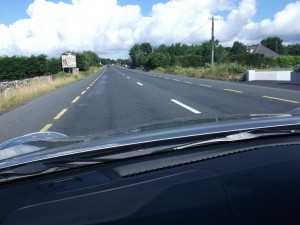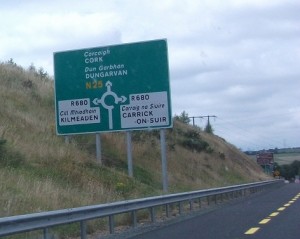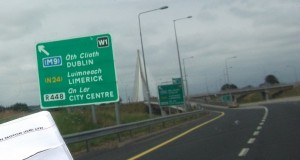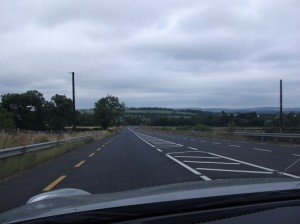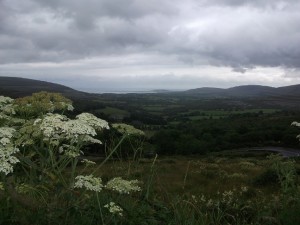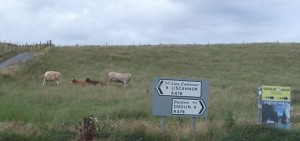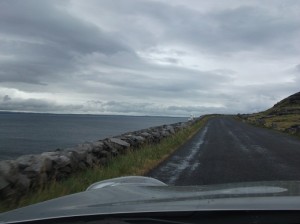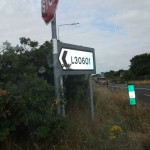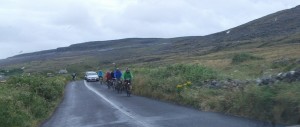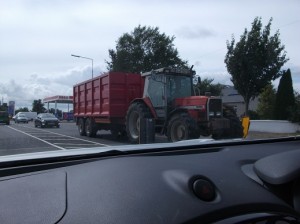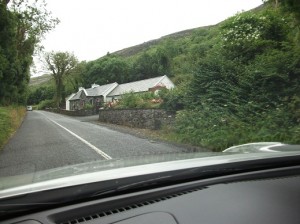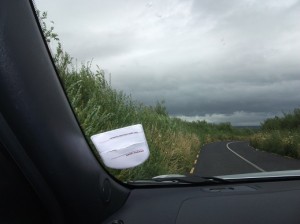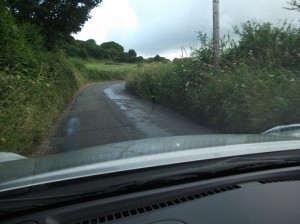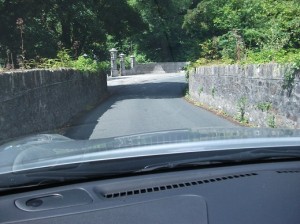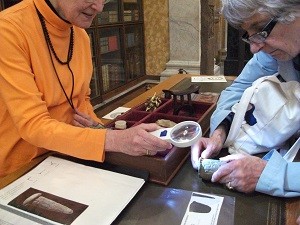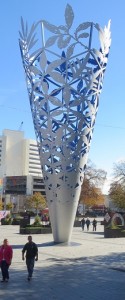Driving in Ireland
August 10, 2013 by Helen
Filed under Travel information, Travel tips
Going to the Republic of Ireland? Thinking of doing a self-drive tour? If you answered yes to these two questions you, by now, have probably read a lot of warnings about driving in Ireland and likely have encountered opinions varying from “piece of cake” to “taking your life in your hands” Right?
Okay. Let’s try to separate the facts from the opinions. A wise friend reminds me that everyone is welcome to their opinion, but there can only be one set of facts. So through photos that we took during our recent (summer 2013) self driving tour of the Republic of Ireland, let’s look at the “facts”.
Hint: Click on any photo to make it larger.
Fact 1: In Ireland you drive on the left hand side of the road.
Helpful hint: Keep the driver next to the centre line. Somehow, to my brain, this is more helpful advise than “drive on the left”.
Fact 2: Most rental vehicles are manual gear shift. You have to look around quite a bit to get an automatic.
Hint & Opinion: Do some experimentation. Pretend you are driving a car where the gear shift is on your left. Try shifting gears by having your left foot on the clutch and your left hand on the gear shift. Can your body master that coordination? Be honest with yourself...because I would be willing to bet that within the first 5 minutes of leaving the car rental property you are going to have to navigate at least one roundabout, driving on the left hand side of the road, shifting as you go into and out of that roundabout.
Fact 3: Car insurance rates are higher if you drive in Ireland. The British car we rented was completely insured in England, Wales and Scotland but it cost extra to take the car into Ireland. We paid 125 pounds to have the car rental agency do the paper work required plus an extra 20 pounds per day that we were in Ireland.
Fact 4: There are roundabouts (traffic circles) on most roads.
My husband is a strong advocate for roundabouts. Logic: a) Much less expensive to build than the overpasses found in North America. b) They completely eliminate “left hand turns”. As North Americans we know left hand turns are one of the most dangerous aspects of driving. And I agree with him that c) traffic flows more smoothly and moves more quickly when you are not always stopping for traffic lights at intersections.
Fact 5: You can go around a roundabout more than once.
Yes, that is a fact. We have done that a few times when I can not read the signs quickly enough to tell him which exit to take.
Fact 6: Most highway signs are in two languages…Irish and English. And they are in that order. Irish on top. English just below. (Enlarge the photo above by clicking on it to get a clearer idea of what I mean.)
Opinion: Once one realizes this fact, it is a matter of training yourself to look at the second line first (if you are an English speaker). Major highways are well signed and give advance warning of upcoming turnoffs.
Fact 7: Ireland has a well developed system of classifying road types…M roads, N roads, R roads, L roads. All the roads we used were paved.
M roads. (Motorways) These are divided highways with controlled access. Only a small percentage of roads in Ireland are classified as M but more are being built. For example traveling down the east coast, heading south from Dublin, most of the road was an N highway but part of it was a M highway. We could see road construction underway that soon will have more of this highway upgraded to an M status.
N roads. (National roads) Quite a variation of roads widths, existence/nonexistence of shoulders depending on the local terrain. The photo below seems to be typical when the land is flat and open.
But the terrain is not always flat and open. Many N roads are limited in width by buildings, rocks, trees, marshes, etc. As Ireland is very protective of historical precedence and aware of ecology, history and ecology are of higher priority than a motorist’s convenience, so historical landmarks, trees, rocks, etc. are not moved…one goes around them. Right on, Ireland. Yes, that statement is an opinion.
An N road led us to this beautiful view. (Galway Bay is in the background).
The road started out wide and flat but soon signs warned of Dangerous Curves Ahead. A series of switchbacks led to this viewpoint…but the thing I will remember most is meeting a loaded logging truck coming down while we were going up. The truck driver kindly (wisely) stopped before that switchback, letting us proceed before he took the whole road to make the turn.
R roads. (Regional roads) that you will have to take to get to many tourist attractions. Generally rather narrow roads but there is a wide variation in the width of the roads depending on local terrain. Since they lead to major attractions it is not uncommon to meet large tour buses on the road. (And as luck will have it, you often meet the bus on the narrowest part of a road.)
L roads. Local roads that you likely will not travel unless you are exploring randomly or are visiting someone who lives beside one. Some are signed, some are not.
Fact 8: You need to share the road with farm vehicles and bicycles.
Fact 9: Roads are narrower in Ireland than in North America.
(Some would argue that is an opinion, but I stand by it as fact. And the lady who stopped her car on a narrow R road and just let others find a way around her while she composed herself would most likely agree with me. )
After being a passenger in a car (driven by my confident, competent husband) on all types of Irish roads, we believe the following is factual.
If there is a center line but no markings on the sides, you know you have 6 feet in your lane. (So know the width of your vehicle!)
If there is a center line plus markings on the shoulder, you have more than 6 feet available in your lane. (Whatever is beyond the shoulder marking shows how much more than 6 feet you have.)
If there is no center line, you have less than 6 feet in your lane and will have to share that space with oncoming traffic.
Fact/opinion 10: Drivers in rural Ireland are as courteous and skilled as drivers in North America…maybe even more so (and yes, that could be considered an opinion).
Want to see more of Ireland?
Then please join us as we travel the Emerald Isle:
Waterford Crystal factory tour
Ready to drive in other countries? Sure you are!
Click here to join us.
Happy travels!

